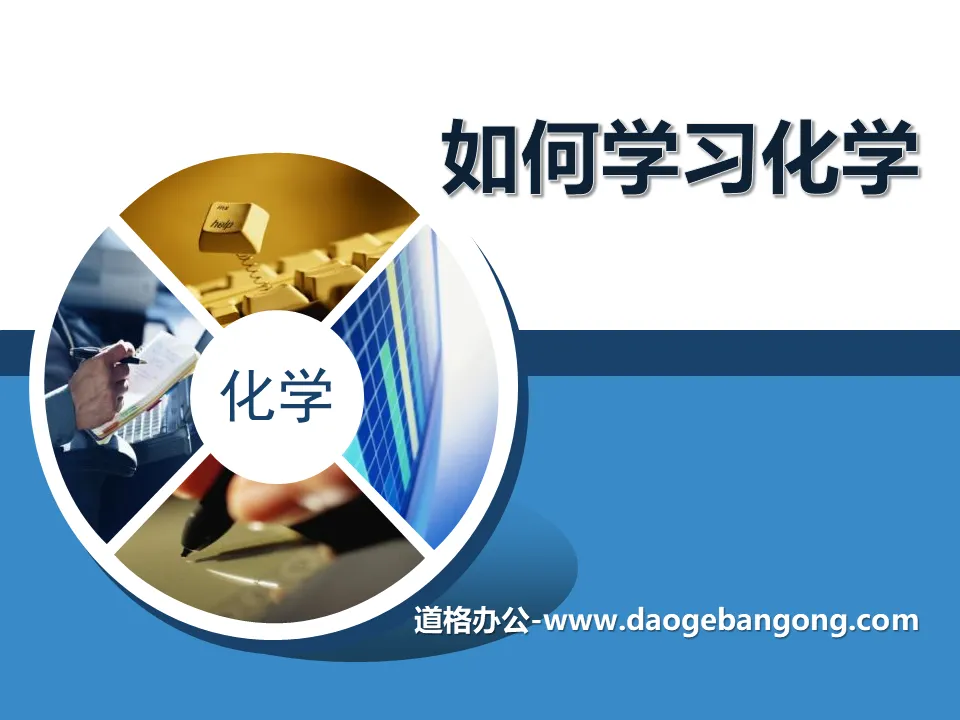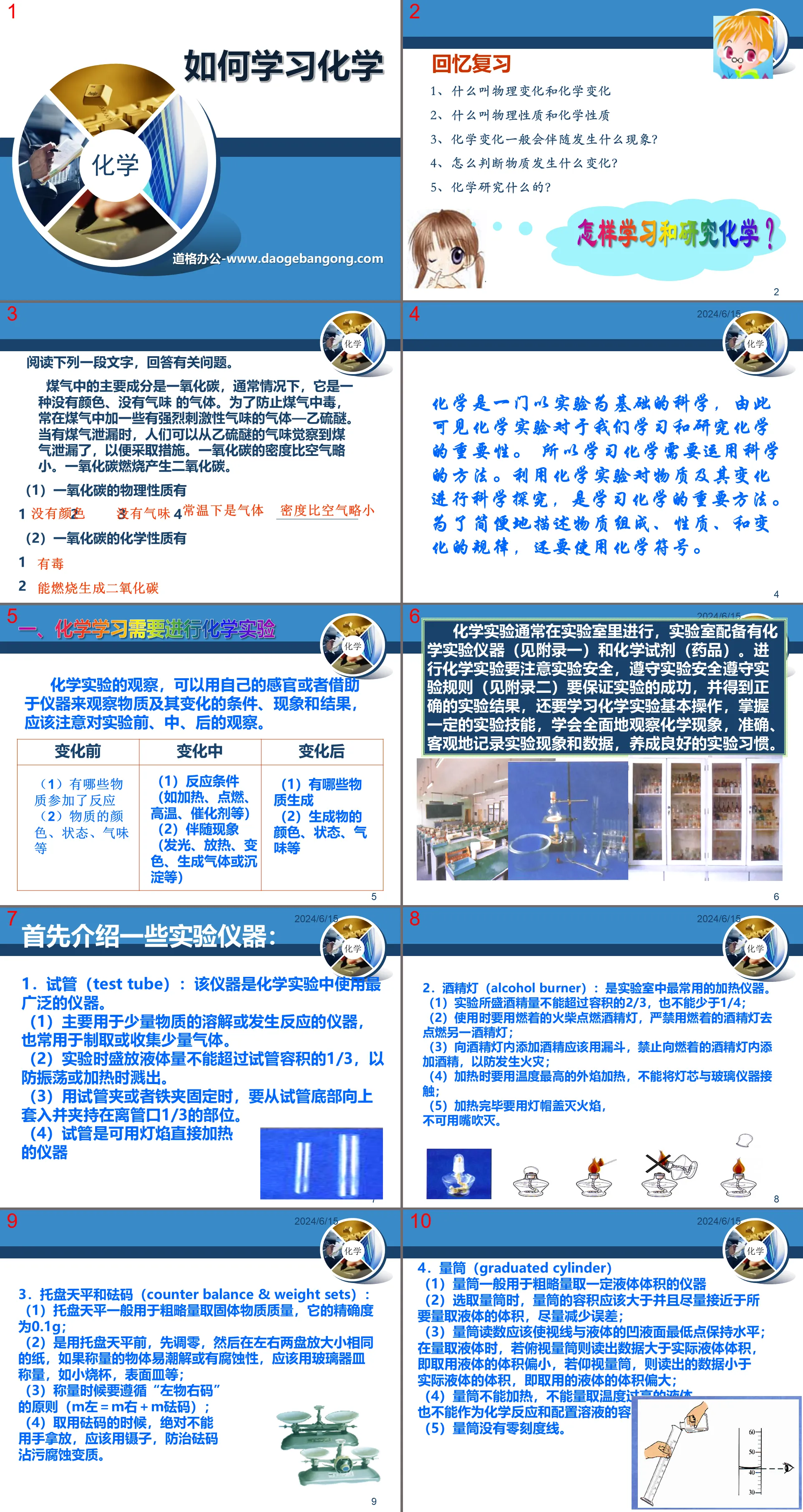People's Education Press High School Chemistry Compulsory Course I
Cantonese Education Edition Ninth Grade Chemistry Volume 1
Beijing Curriculum Reform Edition Ninth Grade Chemistry Volume 2
People's Education Press Ninth Grade Chemistry Volume 1
Beijing Curriculum Reform Edition Ninth Grade Chemistry Volume 1
Lu Ke Edition High School Chemistry Compulsory Course 1
Lu Jiao Edition Ninth Grade Chemistry Volume 1
People's Education Press Ninth Grade Chemistry Volume 2
Cantonese Education Edition Ninth Grade Chemistry Volume 2
Hunan Education Edition Ninth Grade Chemistry Volume 1
Lu Ke Edition High School Chemistry Compulsory Course 2
People's Education Press High School Chemistry Compulsory Course 2
Hunan Education Edition Ninth Grade Chemistry Volume 2
Lu Jiao Edition Ninth Grade Chemistry Volume 2

| Category | Format | Size |
|---|---|---|
| Hunan Education Edition Ninth Grade Chemistry Volume 1 | pptx | 6 MB |
Description
"How to Learn Chemistry" Entering the Chemistry Hall PPT Courseware
recall review
1. What are physical changes and chemical changes?
2. What are physical properties and chemical properties?
3. What phenomena are generally accompanied by chemical changes?
4. How to determine what changes have occurred in matter?
5. Chemistry research or something?
Read the following passage and answer the related questions.
The main component of coal gas is carbon monoxide, which is usually a colorless and odorless gas. In order to prevent gas poisoning, some gas with a strong pungent smell - ethyl sulfide is often added to the gas. When there is a gas leak, people can detect the gas leak from the smell of ethyl sulfide so that measures can be taken. Carbon monoxide is slightly less dense than air. Carbon monoxide burns to produce carbon dioxide.
(1) The physical properties of carbon monoxide are
1_______2_______3_______4_______
(2) The chemical properties of carbon monoxide are
1 poisonous
2 Can burn to produce carbon dioxide
1. Chemistry learning requires chemical experiments
To observe chemical experiments, you can use your own senses or use instruments to observe the conditions, phenomena and results of substances and their changes. You should pay attention to observations before, during and after the experiment.
before change
(1) What substances participate in the reaction?
(2) Color, state, smell, etc. of substances
changing
(1) Reaction conditions (such as heating, ignition, high temperature, catalyst, etc.)
(2) Accompanying phenomena (luminescence, heat emission, discoloration, gas generation or precipitation, etc.)
after change
(1) What substances are produced?
(2) Color, state, smell, etc. of the product
First introduce some experimental instruments:
1. Test tube: This instrument is the most widely used instrument in chemical experiments.
(1) An instrument mainly used for dissolving or reacting a small amount of substances, and is also often used to prepare or collect a small amount of gas.
(2) The amount of liquid contained during the experiment should not exceed 1/3 of the test tube volume to prevent splashing during shaking or heating.
(3) When fixing with a test tube clamp or iron clamp, insert it upward from the bottom of the test tube and clamp it 1/3 away from the mouth of the tube.
(4) The test tube is an instrument that can be directly heated by a lamp flame
2. Alcohol burner: It is the most commonly used heating instrument in the laboratory.
(1) The amount of alcohol contained in the laboratory cannot exceed 2/3 of the volume, nor less than 1/4;
(2) Use a burning match to light the alcohol lamp when using it. It is strictly forbidden to use a burning alcohol lamp to light another alcohol lamp;
(3) A funnel should be used to add alcohol to an alcohol lamp. It is prohibited to add alcohol to a burning alcohol lamp to prevent fire;
(4) When heating, use the highest temperature outer flame to heat, and do not bring the wick into contact with the glass instrument;
(5) After heating, cover the flame with a lamp cap and do not blow it out with your mouth.
3. Counter balance & weight sets:
(1) Pallet balance is generally used to roughly measure the mass of solid materials, and its accuracy is 0.1g;
(2) Before using a tray balance, first adjust to zero, and then place paper of the same size on the left and right trays. If the object to be weighed is easily deliquescent or corrosive, it should be weighed with glassware, such as small beakers, watch glasses, etc. ;
(3) When weighing, follow the principle of “left things and right weights” (m left = m right + m weight);
(4) When taking the weights, you must not hold them with your hands. You should use tweezers to prevent the weights from contamination, corrosion and deterioration.
Introduce several basic chemical operating procedures:
1. Taking solid medicines:
(1) Solid medicines are generally stored in wide-mouth bottles, and alkaline solids generally use cork stoppers instead of glass stoppers;
(2) When removing lumpy solids or solids with larger particles, tweezers are generally used to place the container horizontally. After placing the medicine into the mouth of the container, slowly stand the container upright to avoid breaking the container;
(3) When taking powdery solids or solids with small particles, generally use a medicine spoon or paper trough, tilt the test tube, carefully send the medicine spoon (or paper trough) containing the medicine to the bottom of the test tube, and then let the test tube slowly Slowly stand it upright and let all the medicine fall to the bottom to avoid the medicine from sticking to the mouth and wall of the tube;
(4) If the specific dosage is not specified, solid medicines can generally be taken to cover the bottom of the test tube.
2. Taking liquid medicines:
(1) Liquid medicines are generally stored in narrow mouths, and alkaline solutions generally use rubber stoppers instead of glass stoppers;
(2) When taking a larger amount of liquid, you can use the pouring method.
Specific method: Remove the stopper from the bottle and place it upside down on the table. When pouring the liquid, the mouth of the bottle should be close to the mouth of the test tube. Pour the liquid slowly. When pouring the liquid from a narrow-mouth bottle, the label of the narrow-mouth bottle must be against the palm of your hand. place to prevent the liquid from corroding the label. After pouring the liquid, cap the bottle tightly and put the bottle back to its original place;
(3) To take a small amount of liquid, you can also use a rubber dropper.
(4) When taking a certain amount of liquid, generally use a graduated cylinder to measure the volume.
Keywords: Entering the Hall of Chemistry Teaching Courseware, How to Learn Chemistry Teaching Courseware, Hunan Education Edition Ninth Grade Chemistry PPT Courseware Download, Ninth Grade Chemistry Slide Courseware Download, Entering the Chemistry Hall PPT Courseware Download, How to Learn Chemistry PPT Courseware Download, .PPT format;
For more information about the PPT courseware "Entering the Hall of Chemistry and How to Learn Chemistry", please click the "Enter the Hall of Chemistry PPT and How to Learn Chemistry" PPT courseware.
File Info
Update Time: 2024-11-21
This template belongs to Chemistry courseware Hunan Education Edition Ninth Grade Chemistry Volume 1 industry PPT template
"How to Learn Chemistry" Entering the Chemistry Hall PPT Courseware Simple campus recruitment activity planning plan summary enterprise and institution recruitment publicity lecture PPT template is a general PPT template for business post competition provided by the manuscript PPT, simple campus recruitment activity planning plan summary enterprise and institution recruitment promotion Lecture PPT template, you can edit and modify the text and pictures in the source file by downloading the source file. If you want more exquisite business PPT templates, you can come to grid resource. Doug resource PPT, massive PPT template slide material download, we only make high-quality PPT templates!
Tips: If you open the template and feel that it is not suitable for all your needs, you can search for related content "How to Learn Chemistry" Entering the Chemistry Hall PPT Courseware is enough.
How to use the Windows system template
Directly decompress the file and use it with office or wps
How to use the Mac system template
Directly decompress the file and use it Office or wps can be used
Related reading
For more detailed PPT-related tutorials and font tutorials, you can view: Click to see
How to create a high-quality technological sense PPT? 4 ways to share the bottom of the box
Notice
Do not download in WeChat, Zhihu, QQ, built-in browsers, please use mobile browsers to download! If you are a mobile phone user, please download it on your computer!
1. The manuscript PPT is only for study and reference, please delete it 24 hours after downloading.
2. If the resource involves your legitimate rights and interests, delete it immediately.
3. Contact information: service@daogebangong.com
"How to Learn Chemistry" Entering the Chemistry Hall PPT Courseware, due to usage restrictions, it is only for personal study and reference use. For commercial use, please go to the relevant official website for authorization.
(Personal non-commercial use refers to the use of this font to complete the display of personal works, including but not limited to the design of personal papers, resumes, etc.)
Preview










